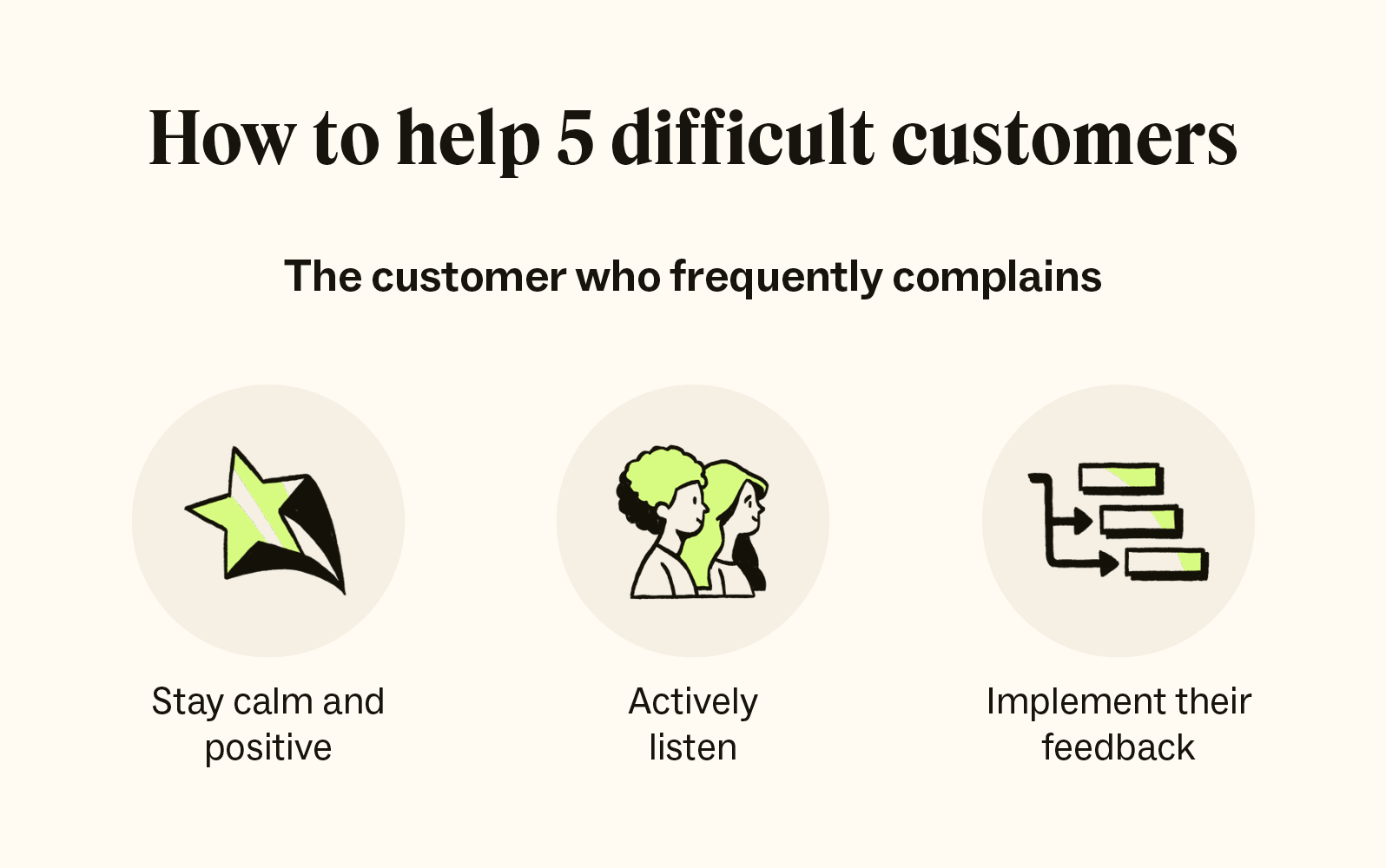Article • 12 min read
How to deal with difficult customers: 13 tips + examples
Understanding how to deal with difficult customers is essential in customer service. Learn how to turn a challenging situation into a great customer experience.
Par Vivian Lopez, Contributing Writer
Dernière mise à jour July 26, 2024
Consistently delivering a great customer experience (CX) can turn a casual shopper into a loyal customer. But even companies known for providing top-tier customer service have to deal with difficult customers. The key is to leverage your customer service skills to flip the negative situation into a positive interaction.
The stakes have never been higher: The Zendesk Customer Experience Trends Report 2023 found that half of customers would switch to a competitor after just one bad experience. Learn how to identify common types of difficult customers, and get tips to navigate tough interactions, so you can build stronger customer relationships that reflect on your bottom line.
Table of contents:
- 5 types of difficult customers (and how to help them)
- 13 tips for dealing with difficult customers
- Examples of how to handle difficult customers
5 types of difficult customers (and how to help them)

Every customer has unique wants, needs, expectations, and character traits. Personalizing your customer service can start each interaction on the right foot. Here are five common types of difficult customers, how to identify them, and how to tailor your service to provide the best support.
1. The customer who leaves frequent complaints
This type of customer doesn’t hesitate to express how they feel about any issue they have with your products or services.
- How to identify them: They frequently reach out to your support team with customer complaints, submit customer feedback, leave negative reviews on your website, or post about issues with your brand on their social media channels.
- How to help them: Empathize and ask questions to understand the root of their frustrations. Some customers may simply like to vent. Remain calm, listen to what they have to say, and implement their feedback if the complaint is valid.
2. The customer who is hard to satisfy
This customer finds something unsatisfactory about a product or service, no matter the level of customer experience. When this happens, show the customer that you value their insights.
- How to identify them: They focus on one or many aspects of your product, service, or solution that don’t meet their expectations. There is typically a great deal of back-and-forth communication before they agree to a resolution or compromise.
- How to help them: Ask them what they want. If it’s doable, you’ve met their expectations—even if they don’t express it. If it’s something you can’t do, be transparent and offer fair, alternative options.
3. The customer who is at risk of churning
This customer is on the verge of turning to a competitor. Successfully navigating this situation is critical to keep your churn rate low.
- How to identify them: They’ve had one or more bad experiences with your business and have brought it to your attention. They may have expressed their interest in your competitors.
- How to help them: Communicate clearly and proactively throughout the resolution process. Loop in management early to find a resolution that makes the customer happy. This could mean discounts, coupons, upgrades, and more.
4. The customer who is indecisive
An indecisive customer may not know exactly what they need from you. They might be confused and have difficulty explaining the issue.
- How to identify them: Their communication is vague, and they push you to fill in the blanks about the issue or offer suggestions for solutions.
- How to help them: Ask the customer plenty of clarifying questions so you can understand what they truly want.
5. The customer with unrealistic expectations
This customer often has unreasonable expectations from your products or services and often wants them for a lower price. They may refuse to accept the outcome or ask you to do something you can’t do for them.
- How to identify them: They ask for features or capabilities outside the scope of your products or services and express disappointment that available offerings don’t meet their expectations.
- How to help them: Identify their concerns as early as possible and address them as best you can. Set boundaries with these customers and communicate what your team is capable of so they don’t have to continue having unrealistic expectations.
Save time with customer service email templates
Deliver fast, consistent service to customers and increase agent efficiency at scale with our free customer service email templates.
13 tips for dealing with difficult customers
It can feel challenging to achieve customer satisfaction during tough interactions—but it’s easier than you think. We’ve rounded up some tips to help you handle difficult customers so you can turn those frowns into smiles.

Examples of how to handle difficult customers
Challenging customer interactions present themselves in many ways. No matter the industry, support agents must be ready for anything. Here are a few examples of dealing with difficult customers and the best ways to handle certain scenarios.

Scenario: When a customer asks to speak with a manager
You take a call and the customer quickly asks to speak with a manager. The customer is angry and shouting. They are hard to understand, but you can make out a few words about the same issue never being resolved.
How to handle it:
A common standard operating procedure (SOP) asks customer support agents to try to assist the customer first before transferring the customer to management. A good practice is to address the customer by their name and offer a genuine apology, speaking calmly and professionally. Advise them that you have all their information and are reviewing their open ticket so you can loop in your manager.
If you see an opportunity to offer a solution, do it. You can also ask the customer if they mind being placed on a brief hold and then quickly collaborate with a manager on a solution. If delaying a transfer is agitating the situation further, you can immediately bring the manager in.
Scenario: When a customer asks for a refund
The buyer reaches out to customer support via WhatsApp Business and says their package arrived and their item is the wrong size. A chatbot understands the sentiment and intent and identifies that the customer is upset. The bot offers self-service resources to help with an exchange, but the customer asks to speak to a human. The bot hands off the customer (and all the context from the interaction) to a live agent.
The customer is angry, saying the sizing chart on the website is confusing, and they need the item by the end of the week. They demand a refund, saying they will buy it locally from a competitor.
How to handle it:
Listen to the customer, apologize, and empathize. You can offer the customer free overnight shipping on the correct item and automatically send them tracking information via their preferred channel, WhatsApp, by the end of the day.
Scenario: When a customer leaves a bad review
An anonymous customer leaves your business a one-star rating on Google with a two-word review that simply says, “Terrible service.”
How to handle it:
Respond to the review with an apology and politely ask if they could provide you with more information about their experience on their preferred communication channel. Once you connect with them, you should have their order number and personal information in your agent workspace.
If there’s no context around their referenced negative interaction, ask them to detail their experience. Determine the root cause of the bad interaction and, if you have approval, offer a discount on their next purchase. If they’re satisfied, politely ask if they could remove the negative review.
Turn an incident into an exceptional experience
Handling difficult customers is one of the biggest challenges for any support agent. The most important thing you can do is show customers respect, patience, and empathy. Knowing how to predict customer behavior based on their communication styles helps you tailor your approach for more effective communication.
Remember, your customers are human beings. If you can genuinely connect with them, it can make a big difference in providing a positive, memorable experience. Now that you know how to deal with difficult customers, you’re on the path to delivering great customer service that sets you apart.
